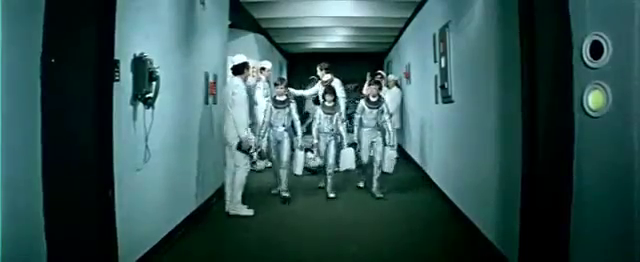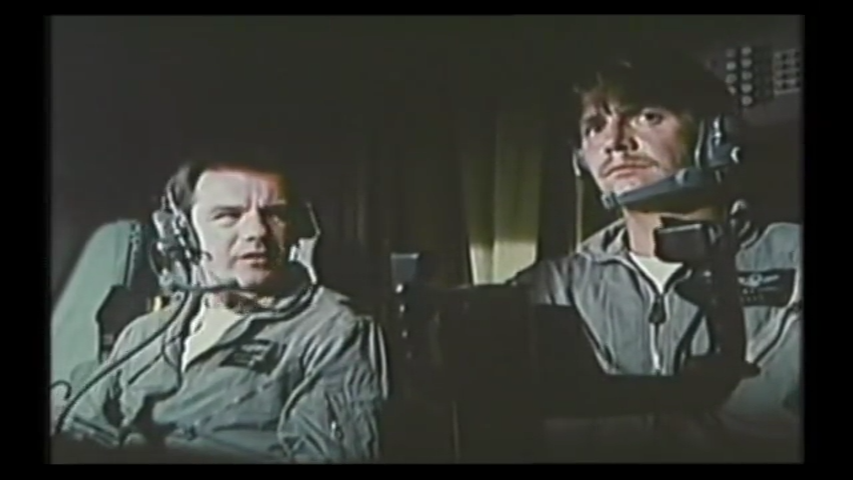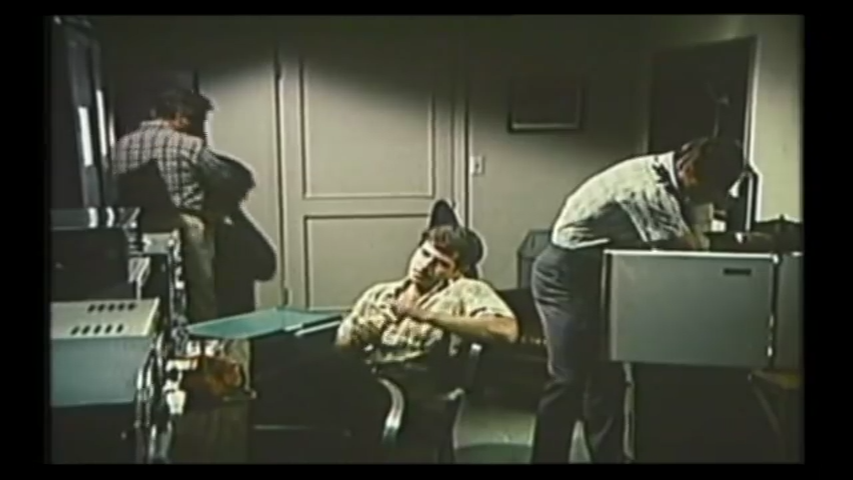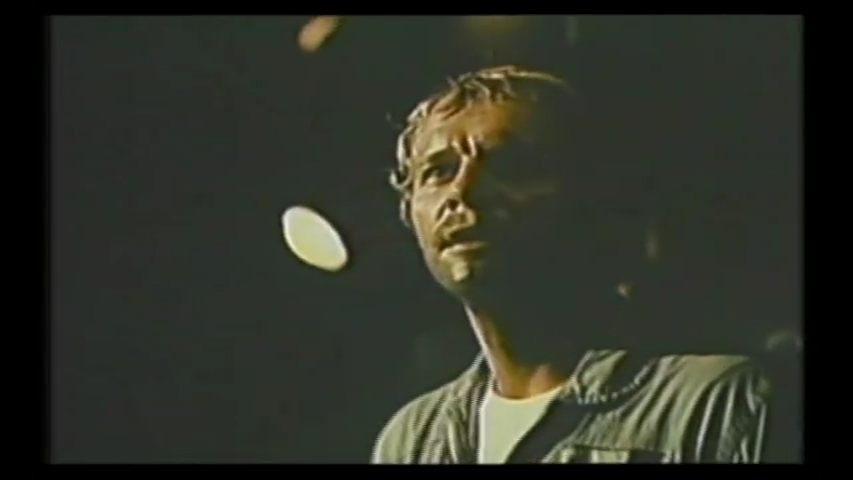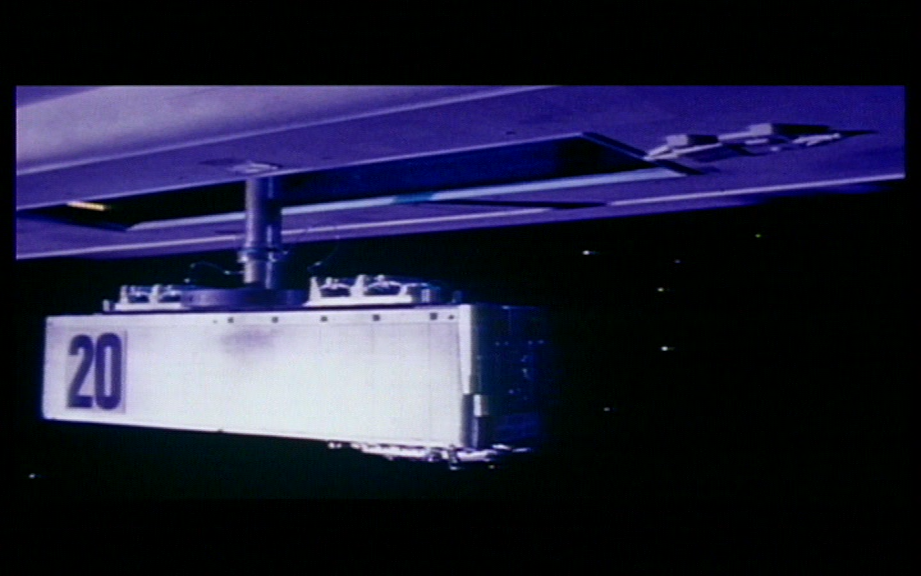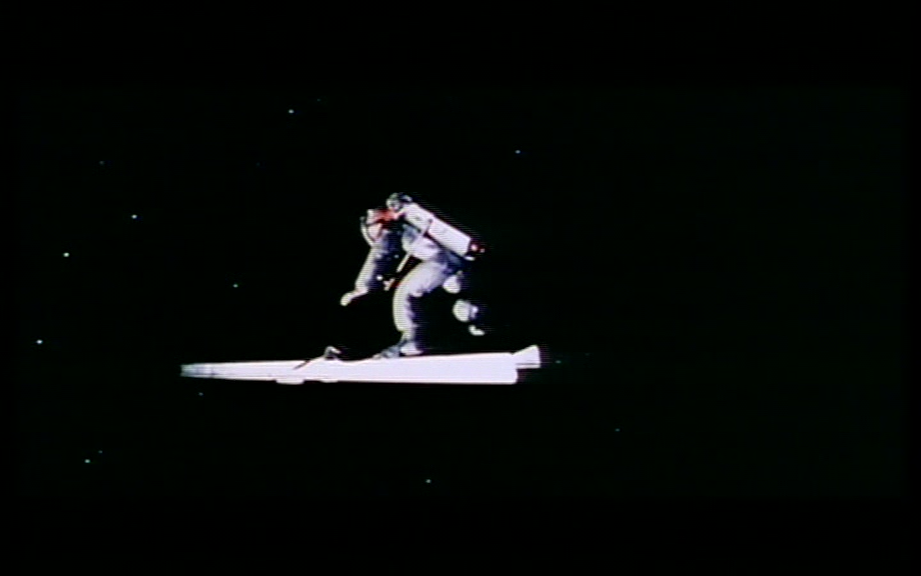-
#547 – Super Stooges vs. the Wonder Women (1974)





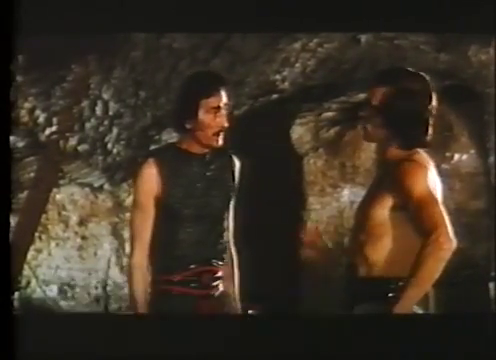


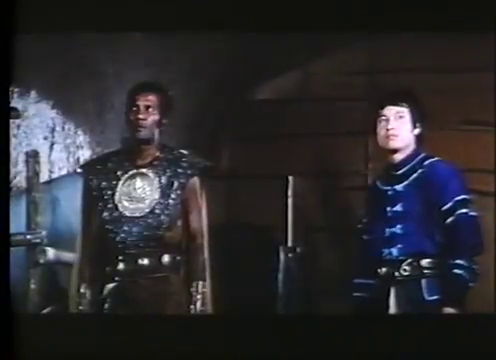

Super Stooges vs. The Wonder Women (1974)
Film review #547
Director: Alfonso Brescia
SYNOPSIS: A tribal village is constantly under threat from a band of Amazon women who lead raids and terrorise the people of the area. The villagers seek help from three men: a man with superhuman strength, a martial arts ,master, and a man who claims to be a God, and the three team up to stop the Amazons and save the village.
THOUGHTS/ANALYSIS: Super Stooges vs. The Wonder Women is a 1974 film, also known as Amazons and Supermen, Return of the Barbarian Women, Barbarian Revenge, amongst others. The film is a derivative of both the film Battle of the Amazons (itself a derivative of the 1973 film The Amazons), and the Three Supermen series. Interestingly, the film is actually made by the same production companies who made those films (with them making the 1973 film Supermen Against the Orient a year earlier). Despite these connections behind the screen, there are no returning characters or story points from these films, and the only similarity to the Three Supermen is that the film stars three men. The plot is simple enough: a tribe of Amazon women are terrorising neighbouring villages. One in particular has turned to a man who claims to be a God, who seemingly protects the village. The plot of the film is simply having these three men (eventually) team up and stop the Amazons. The story does take a while to get going and have the main characters meet up and confront the main threat of the film, but it’s entertaining enough with a mixture of comedy and martial arts. With a runtime of about ninety-five minutes,
Each of the characters have their own unique skills and talents, and perhaps surprisingly, their own story arcs. We have Moog, who has super strength, played by Marc Hannibal, who played for the Harlem Globetrotters. There’s also Chung, a martial artist, and finally Aru, who uses pyrotechnics to fool the villagers and Amazons that he is a God who is protecting the village, and also does a lot of acrobatics too. The variety in the characters and their different origins is pretty interesting, although they don’t really have much time to develop any chemistry between them with the main plot and the individual stories to deal with, but it is at least a decently defined cast.
The Italian/Hong Kong co-production, like in Supermen against the Orient, provides a mixture of Western slapstick comedy, with Eastern martial arts which were popular at the time. There’s a good balance between the two, and while there’s nothing that particularly stands out, at least there’s enough action to keep things energetic and entertaining. We also get some typically scantily-clad women in regards to the Amazons, and while their story doesn’t make too much sense, they get some very odd scenes, such as the opening, which depicts one of their forms of entertainment being to duel with bows and arrows on top of stilts or something…truly bizarre. Overall, Super Stooges vs. The Wonder Women is a silly, cheesy, and messy film that doesn’t offer anything special, does throw a lot of varied characters, entertainment and action into the mix to at least be interesting enough to keep your attention. The runtime is slightly too long for a low-budget film such as this, and could have easily have been trimmed down, but at least the pacing is good, and there’s no protracted scenes of inane dialogue to stretch it out. It feels well made and a decent effort in some parts for a low-budget derivative film, but nothing special otherwise. It’s a bit of a laugh in a “so bad it’s good way” if that is something you want to watch.
-
#513 – Where Did All the People Go? (1974)








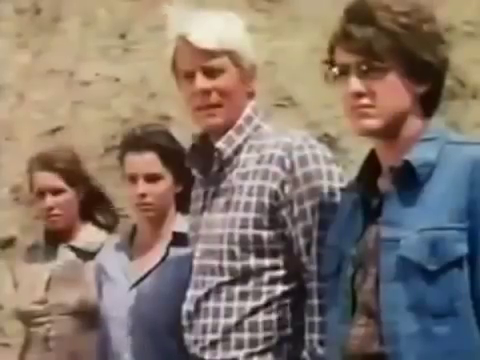

Where Have All the people Gone? (1974)
Film review #513
Director: John Llewellyn Moxey
SYNOPSIS: Steven Anders and his family are enjoying a camping trip in the mountains of California. While Steven’s wife, Barbara, returns home for work, the rest of the family stop and enjoy the remainder of their holiday. While exploring a cave, an earthquake strikes and they head outside to find that some form of solar flare has happened, and they can get no communicate with the outside world. The family head home to try and find Barbara, finding that almost everyone in the world has vanished, leaving only white powder where their bodies once were…
THOUGHTS/ANALYSIS: Where Have All the People Gone? is a 1974 TV movie. The film focuses on Steve Anders and his family, as they are on a camping trip in the Californian mountains. Steve’s wife Barbara has to return home for work reasons, leaving Steve, their two teenage children, and a local farm-hand. The family are down in a cave when an earthquake hits, and they escape to find the farm-hand outside that some form of bright flash happened in the sky at the same time. Unable to get into any contact with anyone, and with the farm-hand suffering what appears to be some form of radiation poisoning, the family try and get back home to Barbara, along the way finding that nearly everyone who saw the flash of light has died and become a heap of white dust. The story is focused around Steve and his family, and the people they pick up and encounter along the way. Initially starting with no answers, they slowly build up theories about what is happening, but their focus is always on getting home to their wife/mother. The film starts off pretty empty, and with characters that are very cookie-cutter and without personality, but slowly, they start to build up some particular responses to what is going on around them, and things start to pay off. The different scenes are a bit hit-and-miss: sometimes they work, sometimes they don’t. As such, the film can feel a bit uneven and disjointed. I don’t think there’s too much original in the film’s portrayal of a world where everyone has disappeared (an idea not unfamiliar to post-apocalyptic films), but it also avoids the common depictions of post-apocalypse scenarios by tuning away from global nuclear fallout and focusing on a family drama. Given that this is a TV movie, which typically focus more on entertainment and action, it is a rare example of such a movie that instead takes its subject matter seriously without the frills.
As mentioned, the characters are very much plain, stereotypical cut-outs, but they do start to grow a little as the film goes on. Steve keeps his family together, while his son David is a science-based person, who unravels a little as the film goes on. Deborah doesn’t really have too much to do other than do some occasional narration (which doesn’t add too much), and the characters of Jenny and Michael, whom the family they pick up along the way, have small, but interesting character arcs that adds something of substance. By the end of the film, there’s some good dialogue and twists that have cohered the characters into a good unit, but they never fully shake off that mould from which they begin.
The open-ended nature of the film leaves us with no real answer about the state of the world and it’s survivors: all we know is about are the characters we travel with, and who they encounter, which says very little. This isn’t necessarily a bad thing, but might not be for everyone who might want the journey to have a more substantive pay-off. When we are given explanations to what is going on, the science seems a bit far-fetched, such as people being turned into white dust being caused by a large solar flare and a particular dominant gene is a bit much the more you think about it. Again, like most things in this film, if you don’t think too much about it and focus on the characters and the depiction of the post-apocalyptic world, you have something that is mildly interesting to watch, if you give it a chance to get going. It’s nothing mindblowing or groundbreaking, but there’s some competency at work that brings the film together. In terms of TV movies, you can do worse, but you can certainly do better.
-
#459 – A Great Space Journey (1974)
A Great Space Journey (1974)
Film review #459
Director: Valentin Selivanov
SYNOPSIS: The All-Union Children’s Space Competition aims to find three children that will be the first youths in space aboard a new spaceship. Sveta, Sasha and Fedya are chosen from the one hundred thousand applicants to embark on the mission with the sole adult on board, Captain Egor Kalinovsky. After the ship is launched, Egor is found to be sick, and placed in quarantine, leaving the children in charge of the spaceship…
THOUGHTS/ANALYSIS: A Great Space Journey is a 1974 children’s science-fiction film based on the play The First Three, or the Year 2001 by Sergey Mikhailov. The film opens up introducing a space program that will choose three children to be the first young people in space. Out of one hundred thousand applicants from across the Soviet Union, three children are selected: Sveta Ishenova, Sasha Ivanenko, and Fedya Druzhinin. The three are sent into space on the spaceship Astra with the only adult on the voyage, Captain Egor Kalinovsky, who is in charge of the mission. When Egor is found to have a fever, that may spread to everyone else, he is placed in quarantine, leaving the children having to take charge of the ship and the mission. The story is fairly simple, being a film aimed at children, and is fairly light on the details concerning what the mission they are on actually is. Nevertheless, there is plenty that is going on in the film, as the children have to navigate through a fair amount of emergencies and strange situations as their journey continues. Not having an overarching objective hinders any sense of direction and accomplishment the film has, but nevertheless, there’s a good sense of adventure and enough variety to capture viewer’s imaginations. There’s a bit of a twist in the story that explains most things at the end, but I’ll discuss that at the end too.
The three main characters are the children that were chosen through the space program. Each of their characters are developed through flashbacks to when they were undergoing the testing, highlighting their relationships with their parents and each other. There’s also Egor, the only adult on the spaceship, who is placed in quarantine, but can still communicate to the others. One of the children, Fedya, is placed in command of the mission after Egor is quarantined, and it is hinted that he is troubled by something about the mission, but refuses to disclose it. Sasha is very animated, and teaches the other children dance moves to keep them entertained. Sveta is more headstrong and quick to rush into situations (contrasting with Fedya’s more reserved nature) and perhaps has some romantic feelings for Sasha. Between the three children, they have a good range of personalities, and at least one of them will appeal to children that the film was aimed at. Their interactions feel genuine in this extraordinary situation, and are generally likeable in their own way. There’s also a good balance between the children needing to act like adults, and also like children; such as when they complete their task running the spaceship, and immediately go get some ice cream from a nearby fridge.
The ending of the film reveals that the entire mission is actually just a simulation for the children to test their abilities. Fedya initially works it out, but keeps it secret for the remainder of the mission. You might think this is a bit underwhelming and disappointed that the children do not actually go into space…and in fact, that’s why actual soviet cosmonaut Alexey Leonov appears at the end of the film saying this exact thing. He also says that the time will come soon (?) when children will really go into space, and encourages children to continue looking forward to it and chasing their dreams, which is nice. The film also rewards the children for the completion of the simulation with a celebration and fanfare, so it still feels rewarding, and as if the characters accomplished something.
The quality of the sets and production values of the film certainly deserve some mention. The set of the spaceship is detailed, and the shots of the ship travelling through space are quite convincing given the time it was released. the model shots of the spaceship and other things also have quite a lot of detail in them. The whole aesthetic evokes the look of 2001: A Space Odyssey, which I’m sure is no coincidence. Given that the play the film is based on is called The First Three, or the Year 2001, it would certainly there’s a connection, but whether it is an homage, a parody, or knock-off, I’m not sure. The film was also apparently in production for two years, which I think shows in the look of the finished product. There’s also some musical interludes which don’t really fit in too well, but again probably something children would enjoy. Most notably, the song’s were written by a young Alexey Rybnikov, who would become one of the Soviet Union’s and subsequently Russia’s most famous composers, apparently in no small part due to the popularity of the soundtrack of this film.
Overall, A Great Space Journey is a fun little adventure that I’m sure its target audience would have enjoyed. The film is well constructed, and great effort had obviously been taken to make detailed and engaging sets. The characters themselves are relatable and distinct, without being too much of walking tropes, and the story has plenty of things going on in it, even if it lacks direction or purpose sometimes. It packs in a fair amount of detail and adventure in just over sixty minutes, and with some decent editing, always has something interesting going on.
-
#382 – The Disappearance of Flight 412 (1974)
The Disappearance of Fight 412 (1974)
Film review #382
Director: Jud Taylor
SYNOPSIS: During a routine exercise, a U.S. military aircraft sees three UFOs on it’s radar screen, and two fighter jets are scrambled to intercept them. When the UFOs and the fighter jets disappear from radar, flight 412 is ordered to land and its crew is detained by a special investigations branch, who attempt to convince them that they saw nothing.
THOUGHTS/ANALYSIS: The Disappearance of Flight 412 is a 1974 TV movie. The story is based on the stories of UFO sightings, who knows about them, and how they are covered up. The movie starts off with a narrator recounting people’s experiences with sighting Unidentified Flying Objects in the skies, and their continued unexplanation. You had better get used to hearing the narrator, as they return constantly to explain the story, rather than letting the film speak for itself through the acting and dialogue. That said, I think the aim was to go for a semi-documentary feel, speculating about the nature of UFOs, which at the time had very little explanation or detail. The trouble is, with so little information about UFO sightings, you can’t really convey any information in a documentary style if it simply doesn’t exist.
The story of the film deals with the crew of a military aircraft, who are launching an exercise to try and solve an electrical problem aboard the aircraft. While in the air, they see three unidentified flying objects on their radar, and two additional fighter jets are dispatched to investigate. The jets and the UFOs eventually disappear from the radar, leading to a Special Investigations Division ordering the plane to land and the crew being detained. They are interrogated and the investigators attempt to convince them that they saw nothing on the radar, and there were no jets. Meanwhile the colonel who dispatched the aircraft can’t get into contact with them, and tries to find out what has happened. A lot of the story revolves around dialogue in dimly-lit rooms and back-and-forths between the various divisions of the military and government. Over time it become difficult to follow as everyone really looks and acts the same, and the motive for wanting to cover-up the UFO is never revealed: it is never shown whether they were aliens, top secret military technology or anything like that. Leaving it a mystery is probably more appropriate for the semi-documentary tone, but it does leave the whole experience somewhat pointless without any answers or payoff. The characters are all bland and uninteresting (again, in aims of keeping it down-to-earth (pun intended)), but there’s some more interesting moments when the crew are being detained and – for lack of a better term – psychologically tortured into believing that what they saw did not happen. However, they are too few and far between to make the film interesting overall.
Being a 70′s TV movie you won’t expect a big budget and spectacular special effects, but for a film about UFOs everything does look a little boring. The shots of the cockpit when the aircraft is in the air is clearly done in a studio, and the plot gets even more confusing due to the various offices and locations which different characters are in all look the same. Every scene is also accompanied with some odd lighting which I guess is meant to give dramatic effect, but just makes everything look dark and difficult to differentiate characters and there expressions. While such a semi-documentary might have been an interesting speculation on the nature of UFOs in 1974, The Disappearance of Flight 412 isn’t really of interest today, and as a story it’s pretty dull and devoid of content.
-
#21 – Dark Star (1974)
Dark Star (1974)
Film review #21
Director: John Carpenter
A science-fiction parody of 2001: A Space Odyssey. Does it stand as a film in it’s own right too?
In the 22nd century, humanity is beginning to colonise the far reaches of the universe. In order to do so, ships such as the Dark Star are sent to star systems armed with bombs to destroy planets which are deemed unstable and a threat to colonisation.
The Dark Star has been travelling in space for 20 years from Earth perspective (though they have only aged 3 years due to use of a hyperdrive). They have recently lost their leader, Commander Powell after a fault occurred in his rear seat panel. The remaining crew members: Lt. Doolittle, Sgt. Pinback, Boiler and Talby. After being in space for so long, the crew have found different ways to keep themselves busy, such as tanning under a lamp, playing an organ made from bottles, or just staring out at the universe every waking second. The crew sleep in the food storage locker, since the crew quarters had blown up, and like most of the ship, is in a state of disrepair which isn’t going to be fixed anytime soon, as political management on Earth refuses to send them any supplies. Pinback also “found” an alien while the ship has been in space, which he keeps in the food locker, which looks very much like a beachball, and torments him throughout the movie.
En route to another system in the Veil Nebula, the ship travels through an asteroid storm, which causes a malfunction in one of the communication lasers, which goes unnoticed. One of the ships “smart bombs”, #20, deploys itself due to this error, and the ship’s computer has to recall it multiple times. When the crew reach the next planet, bomb #20 is deployed and armed, but Talby, who is investigating the malfunction causes damage to the ship’s computer and makes the smart bomb unable to detach from the loading bay, meaning it will explode while still attached to the ship.
Doolittle heads down to cryogenic storage to talk to Commander Powell, who is barely alive after his accident with his rear seat panel, he eventually suggests talking to the bomb to convince it to disarm. He suits up and leaves the ship to converse with the bomb, and teaches it phenomenology, and that the data it is relying on to arm itself is not real, and cannot be trusted. The bomb concedes it needs more time to think about this, and disarms itself.
However, this victory is short-lived, as the bomb develops a God-complex, and with the words “let there be light”, explodes and sends Doolittle and Talby hurtling off in opposite directions (And Commander Powell too, encased in a block of ice). Talby is drawn in by the Phoenix asteroids, which are a special group of asteroids which orbit around the universe, and which Talby had mentioned he wanted to see earlier, and so he is left to travel around the universe with them. Doolittle is then left to be drawn into the planet, and he manages to grab a piece of debris from the ship which is shaped like a surfboard. As he mentioned to Talby earlier, he missed surfing back on Earth while being in space all these years, and so takes a ride on this makeshift surfboard as he descends into the planets orbit…
There are many differences between Dark Star and 2001, I think the most striking one for me is the differences in budget. While 2001 had an immense budget and lavish sets and design, Dark Star started out as a student film, and a £60k budget, which is hardly anything. This makes Dark Star look like an episode of Star Trek with model ships floating against backdrops and the cheap looking sets.And so because of this, 2001 still looks good and fresh today, while Dark Star looks very much of the time it was produced in terms of design, and the hairy cast complete with 70’s beards also reinforce this fact.
A similarity between the two is the use of music throughout the film, which is sparse and restricted to echo the silence of space travel. There is a difference in how they were produced though, with 2001 working with a full orchestra, and Dark Star having all its music produced by synthesisers by the producer. Different processes, same results (Though they differ somewhat in terms of quality).
2001 isn’t the only film Dark Star is connected to. The movie poster calls this movie “The mission of the Strangelove generation”, which obviously refers to Dr. Strangelove, a movie also produced by 2001 producer Stanley Kubrick. The relation between the two being centred around the mislaunch of a bomb is rather obvious. The “beachball” alien concept of the alien getting loose and terrorising the crew was reworked and changed to a horror genre, and became the classic movie Alien in 1979.
I think the most memorable part of the film is the scene in which Doolittle tries to talk the bomb out of exploding by teaching it phenomenology, and telling it that the data it has acquired cannot be trusted, and implanting the concept of Cartesian doubt in the bomb; eventually causes it to develop a God complex, possibly because the bomb figured that the only “thing” it could rely on was itself, so it concluded that it was the only being that mattered. It’s interesting to think about what a artificial mind would do with a phenomenological conundrum such as this.
Apparently, the movie didn’t receive much of a positive reception at the box office, as the movie was advertised as a serious movie, so perhaps the audience did not get what they expected. The movie also changes pace and direction quite a lot, but the plot never develops too much complexity, so it is still easy to follow. Dark Star is an odd film, never intended for cinematic release, but it takes on some of the classic science-fiction tropes in a satirical, humourous and just plain alternative way, which might make it worth a watch if you’re interested in that sort of thing.



